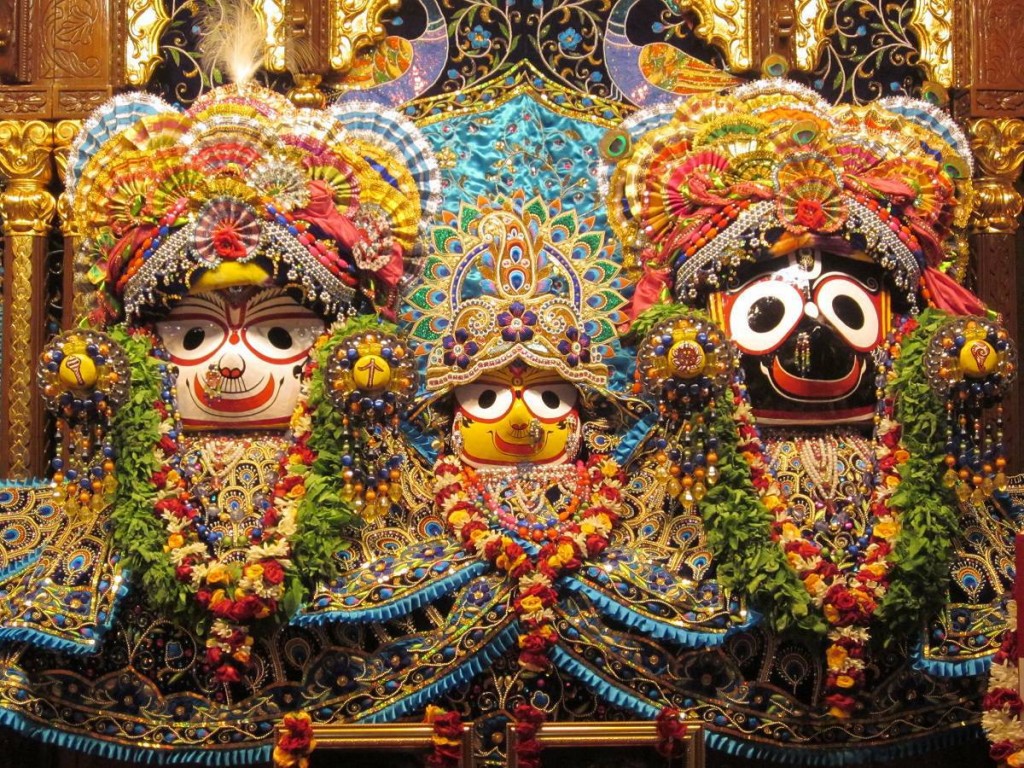DN Darshan: Jagannath Temple, Puri

dynamitenews.com
Puri/ 21 Jan 2016. Jagannath Temple is a famous sacred temple situated at puri, Odisha and is an important pilgrimage destination for worshippers of Lord Krishna and Lord Vishnu. It is also a part of the Char Dham pilgrimages that a Hindu deity expects to make in a lifetime. Usually, the icons of most Hindu deities are made out of stone or metal, but the image of Lord Jagannath is made of wood. Every twelve or nineteen years these wooden figures are ritually replaced by using sacred trees that have to be carved as an exact model.

Architecture
The temple complex is enclosed by a wall about seven meters high. The wall is pierced by four gates, facing the four directions. On the east-facing gate, there are stone images of two lions and it is called the Lions Gate. The north, south and west facing gates are similarly known as the Elephant Gate, the Horse Gate and the Tiger Gate (also called the Khanja Gate) respectively. There is a monolithic pillar about 10 meters high. This pillar is known locally as the Aruna Stambha.
History
The construction of the current Jagannath temple was initiated by the ruler of Kalinga, 'Anantavarman Chodaganga'. The Jaga mohan and the Vimana portions of the temple were built during his reign (1078 - 1148 CE). However, it was only in the year 1174 CE that the Oriya ruler Ananga Bhima Deva rebuilt the temple to give a shape in which it stands today.
How to reach
Air
Biju Pattnaik Airport is the nearest airport; the distance is 65 K.Ms from Puri and can be covered in an hour by car.
Rail
Puri is well connected by Railways. Trains run from Kolkata, New Delhi, Ahmedabad and several other major cities. It is also a major railhead on the East Coast Railway, bifurcated from Khurda Road Jn.
Road
Only 60 Km. away from Bhubaneswar by State Highway No-8, Puri has got a 35 Km Marine drive road way to Konark. The State Capital is situated on both sides of Calcutta-Madras National Highway No-5.
Legend
It is believed that Lord Jagannath was originally worshipped as Lord Neela Madhaba by a Savar king (tribal chief) named Viswavasu. Having heard about the deity, King Indradyumna sent a Brahmin priest, Vidyapati to locate the deity, who was worshipped secretly in a dense forest by Viswavasu. Vidyapati tried his best but could not locate the place. At last he managed to marry Viswavasu's daughter Lalita. At repeated request of Vidyapti, Viswavasu took his son-in-law blind folded to a cave where Lord Neela Madhaba was worshipped.
However, Vidyapati dropped mustard seeds on the ground on the way. The seeds germinated after a few days, which enabled him to find out the cave later on. On hearing from him, King Indradyumna proceeded immediately to Odra desha (Odisha) on a pilgrimage to see and worship the deity. But the deity had disappeared. The disappointed king determined not to return without having a darshan of the deity and observed fast unto death at Mount Neela. A celestial voice then cried out 'you shall see him.' Afterwards the king performed a horse sacrifice and built a magnificent temple for Vishnu and the idol of Sri Narasimha brought by Narada was installed in the temple. Once in his sleep, the king had a vision of Lord Jagannath. An astral voice also directed him to receive the fragrant tree on the seashore and make idols out of it. Accordingly, the king got the image of Lord Jagannath, Balabhadra, Subhadra and Chakra Sudarshan made out of the wood of the divine tree and installed them in the temple.
 Dynamite News
Dynamite News 